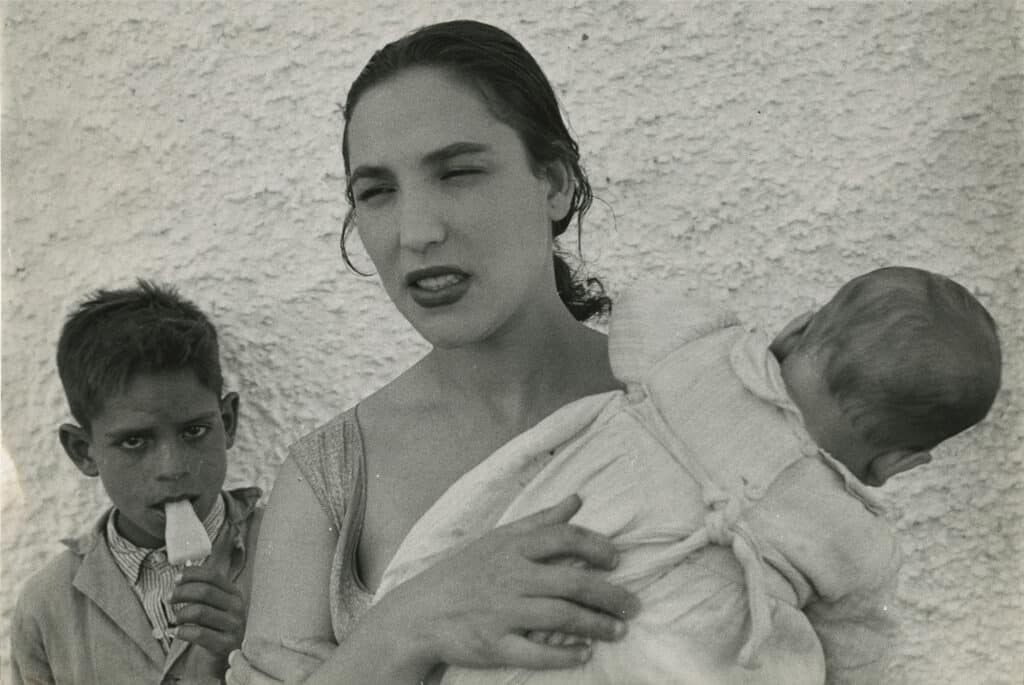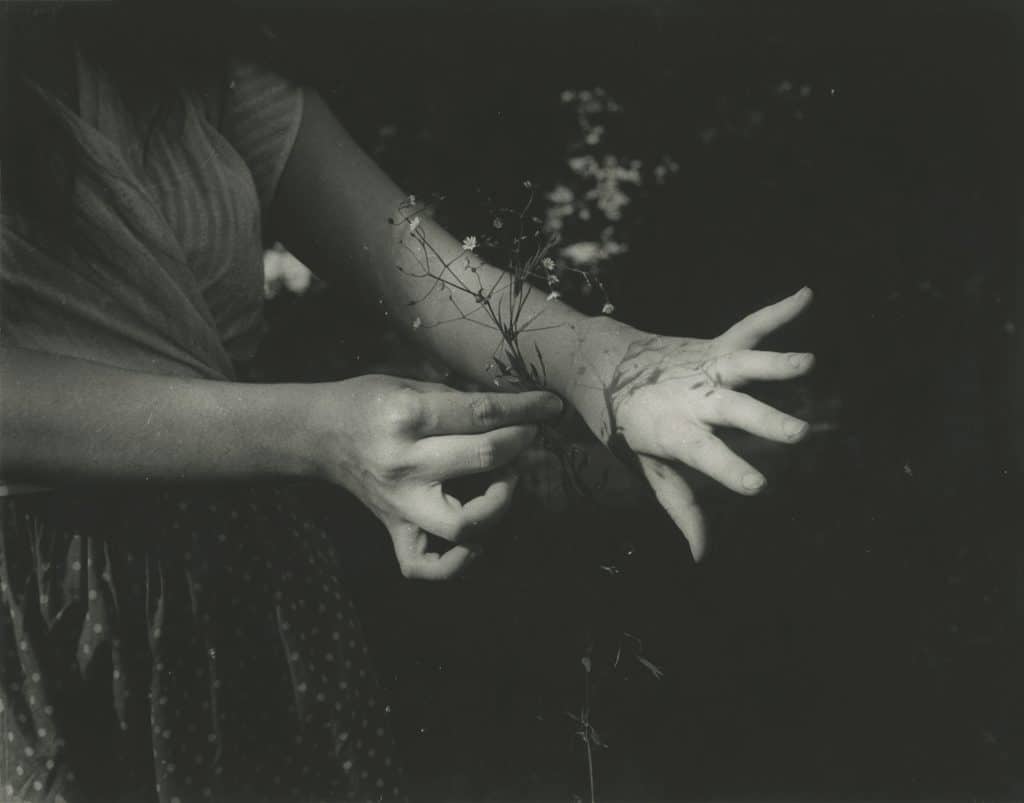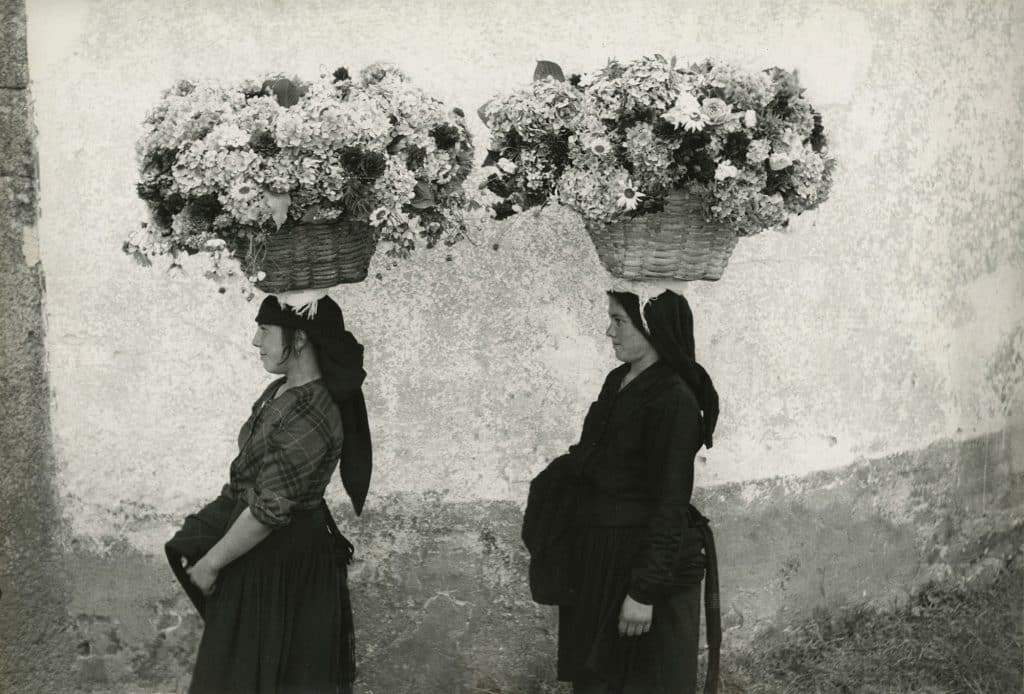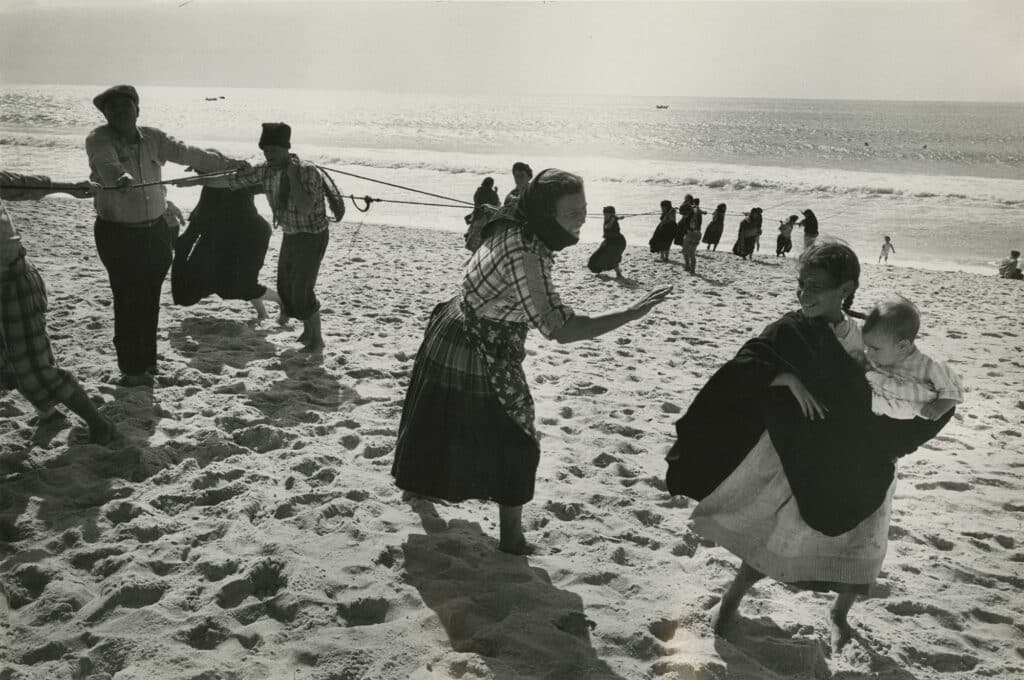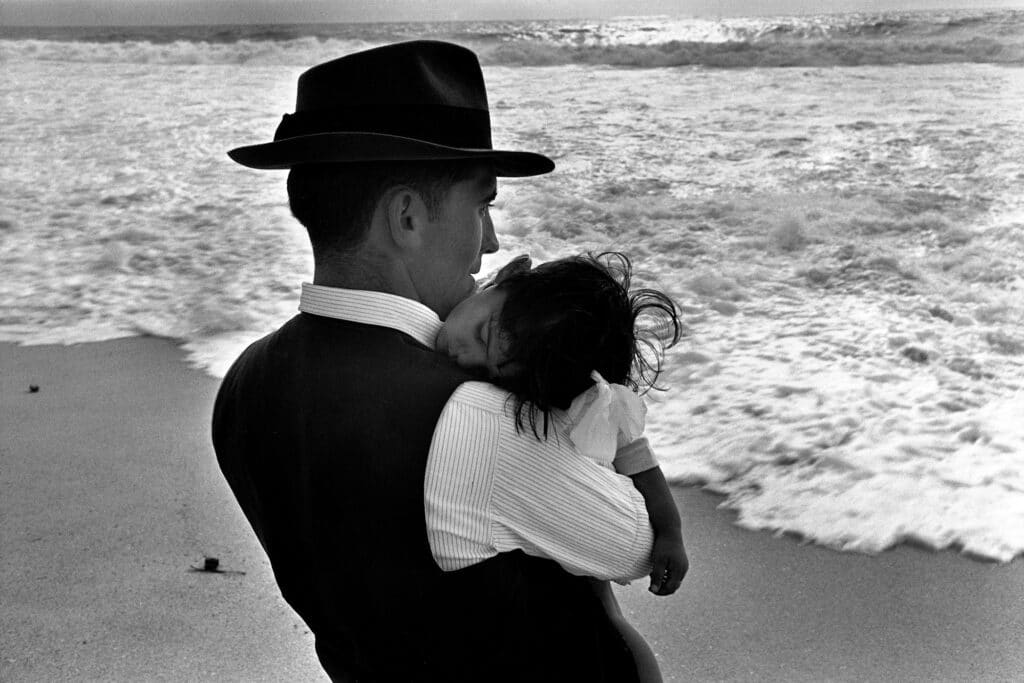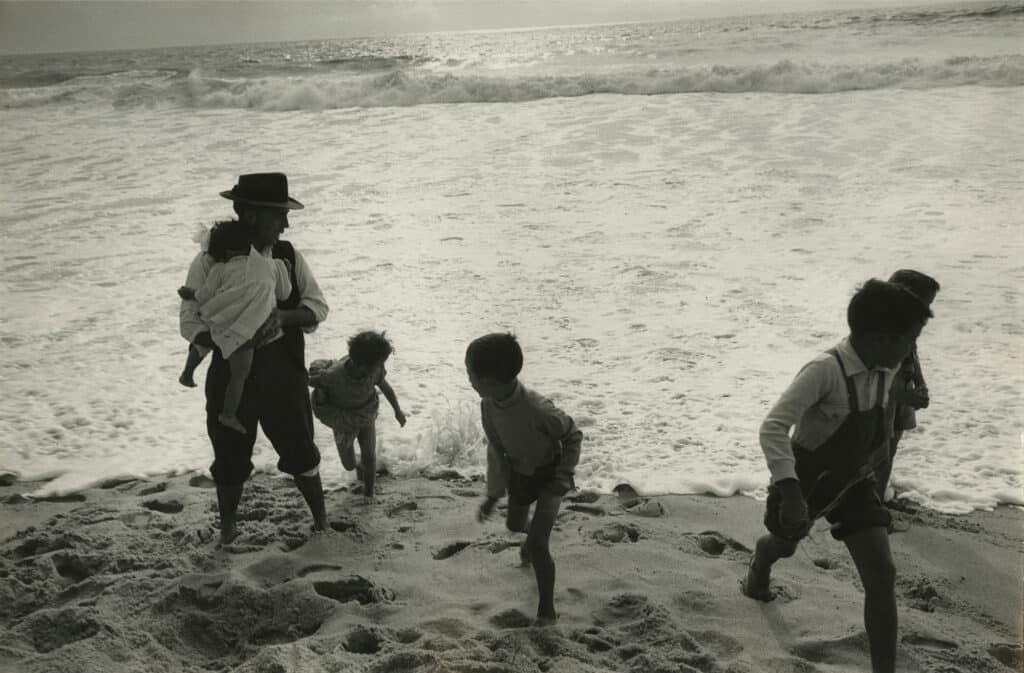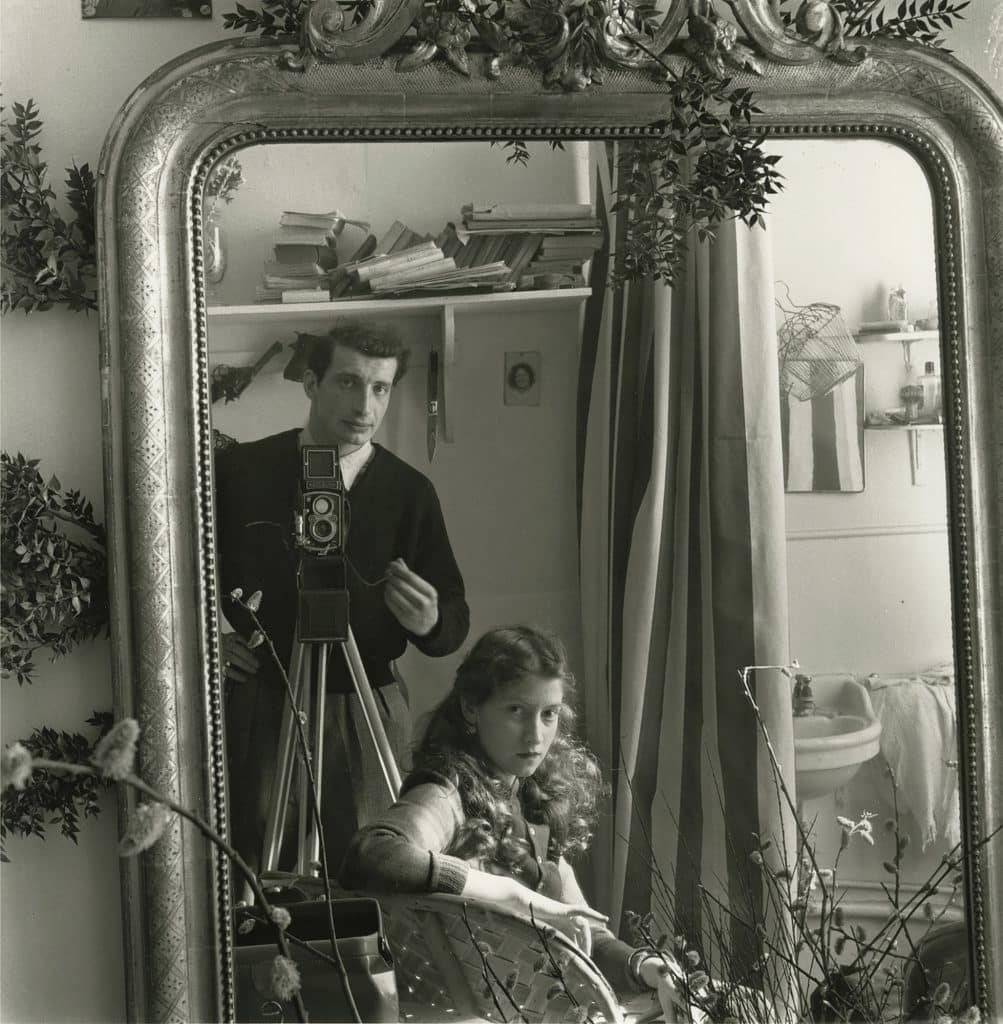
Unpublished prints are displayed side by side with rare editions and iconic images. The exhibition is subdivided into three themes: Lella, the photographer’s first great love and muse; Paris, the humanist scene par excellence; and Boubat’s photo reports from abroad: Portugal, Spain, Italy, and the United States. This is a great opportunity to discover his multifaceted oeuvre.
While it may not be his most iconic photo, the photographer’s self-portrait with Lella offers a glimpse behind the scenes of this artistic collaboration. Boubat, with his big eyes brimming with tenderness and his generous lips lovingly looks at his muse who poses with aplomb while eyeing the lens with a piercing gaze. Lella’s pictures are the product of love and active artistic cooperation.

Lella was a friend of Boubat’s sister, and the meeting of the future lovers was initially photographic, as she would say it. “The first time I saw Edouard Boubat was in a photograph. This photo was the only ornament on the wall in Edouard’s sister’s room. Brother and sister had adjoining study rooms in the attic. I looked at this photo for a long time. This was during the Occupation. … A second image: young women and men, we are rushing down a stairwell, dark as hell, without fear of breaking our necks. The first one at the bottom… I see from the second-floor landing, framed by dazzling light a tall young man dressed in green standing in the doorway. I can “place” him straight away. I am instantly struck by his dreamy attitude, his “innocence,” and an air of serene benevolence he emanates, even before I have approached him. I have a premonition, and I had never had any, or, for that matter, been interested in representatives of the male species, that this young man is destined for me and that he has just been delivered to me wrapped in sunshine. … We are twenty years old, and Paris had just been liberated.”
Shots of Lella are an ode to love and a celebration of femininity. “The reflection of the woman in oneself provokes an expansion of the heart and invites us to harmony with this plenitude,” said Boubat. Undoubtedly the photographer’s most famous image, Lella, Brittany, 1947, is a closeup of Lella facing the lens yet gazing beyond, into the distance, with a proud hero’s demeanor and a mermaid’s sensuality. With her diaphanous skin, her wavy, wind-blown hair, she looks like the flamboyant prow of a ship.

What is astonishing is the quality of light we find in Boubat’s pictures: celestial, it always envelops the photographer’s subjects, giving us the impression of the sun caressing our skin. One shot is a wonderful case in point: it shows Lella standing on a beach, at the water’s edge, her feet anchored in the ground, her chest straight and glorious like that of an ancient statue, her figure appearing to soar in the radiant sky. It’s a hymn to life.
It is easy to understand why Boubat is one of the eminent representatives of humanist photography which emerged in postwar France, on par with Robert Doisneau, Henri-Cartier Bresson, Brassaï, and Willy Ronis. When the war ended, Boubat was just happy to be alive: “After the war I was twenty, I want to live…. My photos, like gateways in time, opened the world for me: ‘Hit the road!’ ‘You must snap the photo. You must embrace life so that it comes alive’.” Humanity and life are at the heart of his photographic work. His pictures of Paris and Portugal, where he was sent in 1956 by the magazine Réalités as one of its main photographers, are proof enough.
His Portuguese commission brought him face to face with the country and its inhabitants, which dovetailed with a more intimate inquiry. His mother being Portuguese, Boubat found himself in search of his origins: “Photography is like a quest, a pilgrimage, a hunt.” The first photo he took there shows a man holding his child, peacefully asleep in his arms, tightly against his chest. He looks over a rough sea, finding a moment of serenity, contemplation, and togetherness. “I went to see the beach. I took only my little Leica of the time, and this man was just there. Snap. I had been in the country for half an hour, he was waiting for me with his child, and I took my first photo of Portugal, a photo that will remain.”
Boubat immortalized Portugal’s poor—hard-working yet happy. The photographs taken on the beaches of Nazaré, for instance, depict a traditional fishing village living according to the rhythm of the tides and rolling waves. We see men, women, and children, their skin tanned by the sun, practicing the traditional, artisanal form of net fishing called “Arte Xávega.” Although he documented Portuguese fisheries for Réalités, he kept returning, irresistibly drawn to the country, traveling inland to the Ribatejo region, on the banks of the Taj.
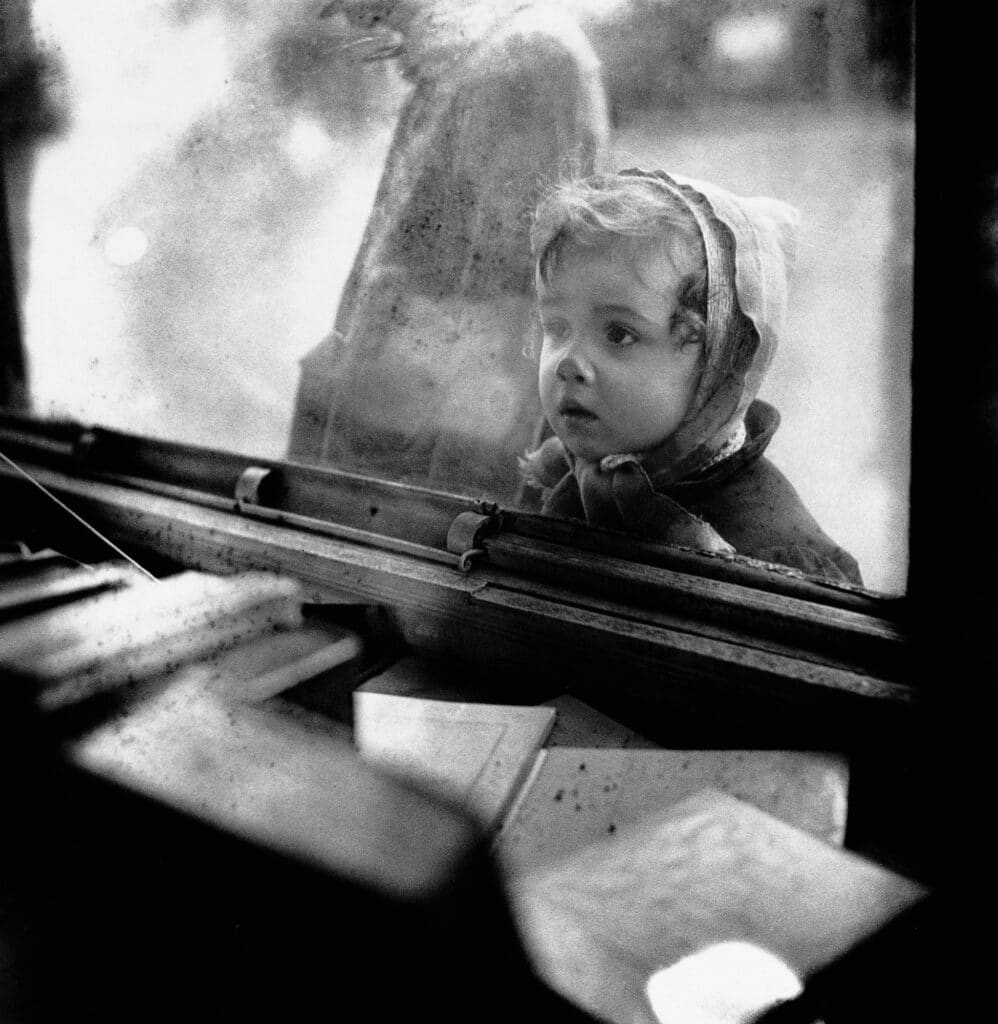
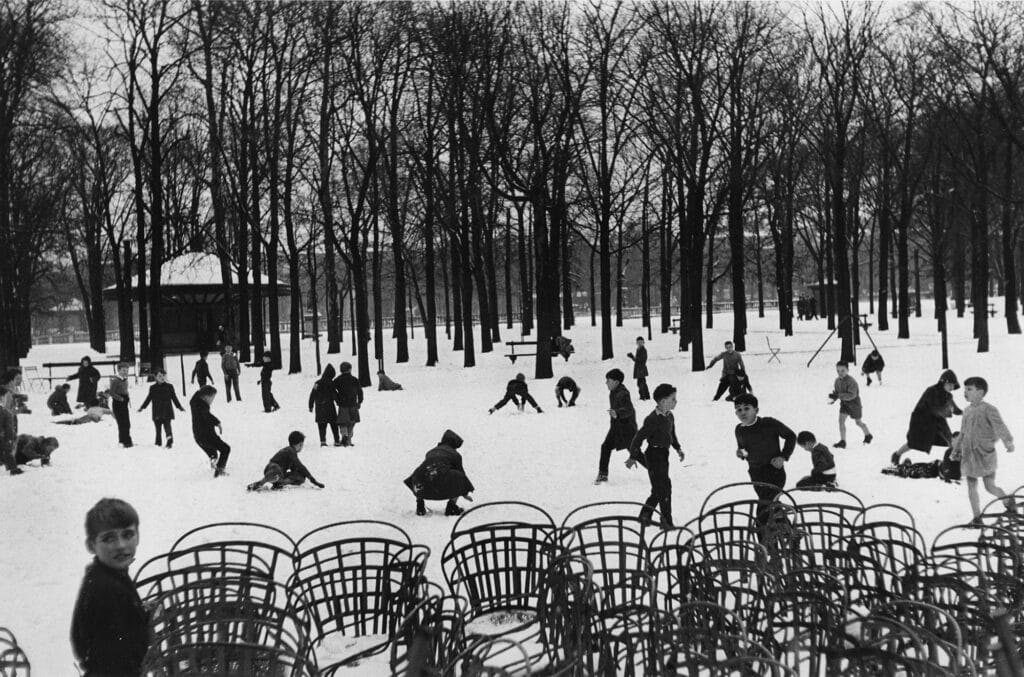
Jacques Prévert called him a “peace correspondent” in his 1971 poem “Éternité instantanée” [“Snapshot eternity”]: “But Boubat, in towns close at hand, as in faraway lands and great deserts of boredom, seeks and finds oases. He is a correspondent of peace.” Boubat owes this title to his openness, his fresh look, and his sense of wonder: “In photography we use wonderful words, aperture for example, there is the aperture of the diaphragm which is a mechanical thing but there is also our aperture to us.”, “I create with what I am given. I may not be going to the ends of the earth, but I can photograph a flower in the garden, a speck of light in the frame of my window, or my wicker chair.” The photographs taken in the streets and parks of Paris bear witness to this ability to capture the magic and poetry of the moment: children dancing on the smoky roofs of Paris, a snowball fight in the Luxembourg Garden, a goat performing its circus act. Boubat seems to contemplate life like the child with its nose pressed to a shop window in the Boulevard Saint Germain.
“Photography is made of everything and nothing. This nothing is to be done. A simple thank you: to the lovers, to the beaches, to the sun, to the encounters, to all those who are gone and of whom only a photo remains. This gratitude is mine.” Every person he has met, every situation he found himself in, appears to be a gift, the gift of life.
Boubat contemplates life with a velvet gaze. His photographs are like poems that make existence sweeter and invite us to contemplate life with the same openness of vision.
“Édouard Boubat, La douceur du regard (1946–1957)”. Exhibition at the Galerie Rouge, 3 rue du Pont Louis-Philippe, 75004 Paris, April 21 to June 18, 2022, Wednesday to Saturday, 11am–7pm.
